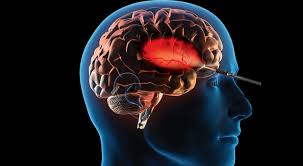The Rise of Keyhole Brain Surgery: How It’s Changing Neurosurgery
Neurosurgery has long been associated with complex, high-risk procedures that often require large incisions and lengthy recovery times. However, advancements in medical technology and surgical techniques are transforming the field, making brain surgery safer, more precise, and less invasive. One of the most significant breakthroughs in this evolution is the rise of keyhole brain surgery. This minimally invasive technique is rapidly becoming a game-changer, offering new hope and better outcomes for patients with brain tumors, aneurysms, and other neurosurgical conditions.
The Evolution of Keyhole Brain Surgery
Keyhole brain surgery, also known as minimally invasive neurosurgery, is a surgical technique that uses small incisions—often less than an inch in size—to access the brain. The approach involves using specialized instruments and advanced imaging technology to reach the affected area without the need for large, open craniotomies. The term “keyhole” reflects the small opening required to perform the procedure, much like peering through a keyhole to gain a clear view inside a room.
The roots of keyhole brain surgery can be traced back to the early development of endoscopic and microscopic techniques in the 1970s and 1980s. Neurosurgeons began using small, tube-like instruments with cameras (endoscopes) and microscopes to visualize and operate on delicate structures within the brain. Initially, these techniques were limited to specific procedures, such as removing pituitary tumors or draining fluid from the brain. However, technological advancements over the past two decades have expanded the possibilities, allowing surgeons to treat a broader range of conditions with increased precision and safety.
Today, keyhole brain surgery encompasses several innovative techniques, including endoscopic skull base surgery, neuro endoscopy, and stereotactic radiosurgery, among others. These methods leverage high-definition imaging, computer navigation, and robotics to guide surgeons through the intricate landscape of the brain with unprecedented accuracy.
The Advantages of Keyhole Brain Surgery
Keyhole brain surgery offers numerous benefits over traditional open-brain surgery, which often involves large incisions, the removal of a portion of the skull, and significant manipulation of brain tissue. Here are some key advantages:
- Minimized Trauma to the Brain and Surrounding Structures: Traditional brain surgery can be invasive, requiring a large opening in the skull to access the target area. In contrast, keyhole surgery uses small, strategically placed incisions, which minimizes disruption to the brain and surrounding tissues. This approach reduces the risk of damage to healthy brain tissue, nerves, and blood vessels.
- Reduced Risk of Complications: With smaller incisions and less tissue manipulation, patients undergoing keyhole brain surgery experience a lower risk of complications such as infections, blood clots, and cerebrospinal fluid leaks. The reduced surgical exposure also minimizes the chances of developing postoperative swelling and haemorrhage.
- Faster Recovery and Shorter Hospital Stays: One of the most significant advantages of keyhole brain surgery is the quicker recovery time. Patients typically spend less time in the hospital, experience less pain, and return to their normal activities faster than those who undergo traditional open-brain surgery. This shorter recovery period reduces the overall burden on healthcare resources and allows patients to resume their daily lives sooner.
- Smaller Scars and Better Cosmetic Outcomes: The small incisions used in keyhole brain surgery result in smaller scars, often hidden within the hairline or natural creases of the skin. This leads to improved cosmetic outcomes and less psychological impact on patients who may already be dealing with the emotional burden of a brain condition.
- Enhanced Precision and Accuracy: Advanced imaging techniques, such as MRI and CT scans, combined with real-time computer navigation, allow neurosurgeons to perform keyhole brain surgery with remarkable accuracy. This precision is particularly crucial when operating near critical areas of the brain, such as those controlling speech, vision, or motor functions.
Revolutionizing Treatment Options for Neurosurgical Conditions
The rise of keyhole brain surgery is revolutionizing treatment options for various neurosurgical conditions. Here’s how it’s making a difference:
Brain Tumors: Keyhole surgery has become a viable option for removing many types of brain tumors, including gliomas, meningiomas, and metastatic tumors. By minimizing trauma to surrounding healthy tissue, keyhole techniques enhance the safety and effectiveness of tumor removal, particularly in hard-to-reach areas or locations close to vital brain structures.
Aneurysms: Cerebral aneurysms, or weak spots in brain arteries, pose a risk of life-threatening bleeding if they rupture. Keyhole techniques, such as endovascular coiling, allow neurosurgeons to treat aneurysms through tiny incisions in the groin or wrist, navigating through blood vessels to reach the brain. This approach avoids the need for open surgery and significantly reduces recovery time and risks associated with traditional clipping methods.
Hydrocephalus: Keyhole brain surgery is also highly effective for treating hydrocephalus, a condition characterized by excess fluid accumulation in the brain. Using neuro-endoscopy, surgeons can create new pathways for cerebrospinal fluid to flow or remove obstructions, alleviating pressure on the brain without the need for invasive procedures like shunt placement.
Pituitary Tumors and Skull Base Lesions: Endoscopic skull base surgery, a form of keyhole surgery, enables surgeons to access and remove tumors located at the base of the skull, including pituitary tumors. This technique involves passing an endoscope through the nose, avoiding the need for external incisions and reducing recovery time significantly.
A Glimpse into the Future of Neurosurgery
Keyhole brain surgery represents a monumental shift in the field of neurosurgery, with the potential to transform how many brain conditions are treated. As technology continues to evolve, the precision, safety, and effectiveness of these techniques will only improve. Innovations such as robotic-assisted surgery, augmented reality, and artificial intelligence are already being integrated into neurosurgical practice, paving the way for even less invasive and more accurate procedures.
Conclusion
The rise of keyhole brain surgery is ushering in a new era of hope and possibility for patients facing complex neurosurgical conditions. By offering a less invasive, safer, and more effective alternative to traditional open-brain surgery, keyhole techniques are redefining the boundaries of what is possible in neurosurgery. As these advancements continue to unfold, they promise not only to improve patient outcomes but also to enhance the overall quality of life for countless individuals around the world.

Dr. Vignesh Sayeerajan Consultant-Neurosurgery





.png)




